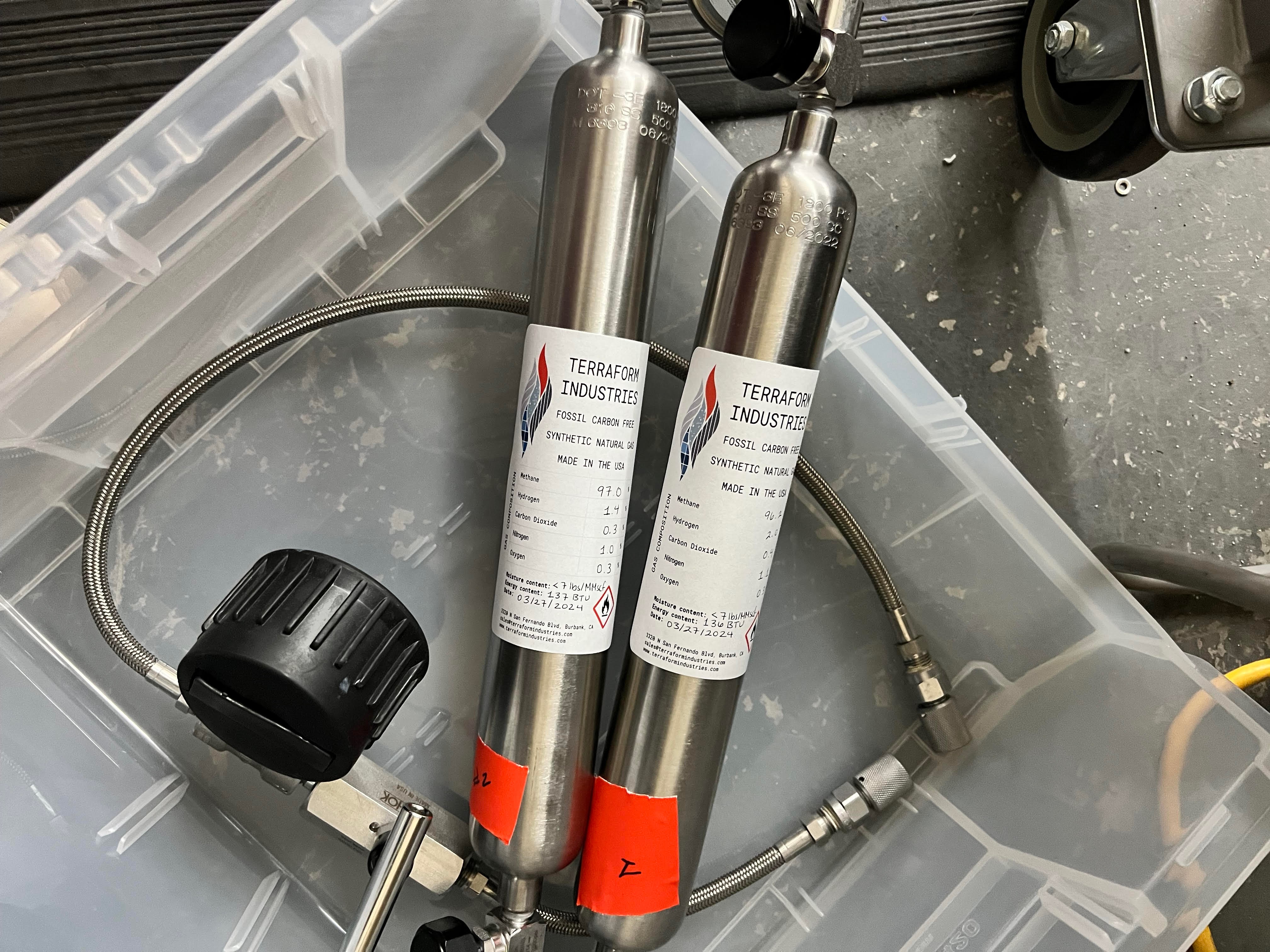The modern world depends on a vast network to extract, process, transport and ultimately consume hydrocarbons such as crude oil and natural gas. But these resources come at a cost: They are finite, difficult to extract, and they pull carbon dioxide out of the ground and release it into the air.
Instead of reducing humanity's dependence on hydrocarbons (which is impossible, undesirable or both, depending on who you ask) Terraform IndustriesThe solution is to produce this resource, using electricity and air, through a system called Terraformer. Today the startup announces that it has put a Terraformer demonstrator into operation and has produced synthetic natural gas for the first time.
About the size of two shipping containers, the Terraformer consists of three subsystems: an electrolyzer, which converts solar energy into hydrogen; a direct air capture system that captures CO2; and a chemical reactor that ingests both inputs to produce synthetic natural gas suitable for gas pipelines. The entire machine is optimized for a one megawatt solar panel.
As CEO Casey Handmer admits, what the company has done isn't “super original.” For example, electrolysis and Sabatier chemical reactors are well understood processes. But the company has been able to innovate in the process, including building its own direct air capture system and adapting it to run on a variable energy source, solar energy. Thus, while any particular subsystem can trace its origins back to, say, the 19th or 20th century, the entire process is entirely new.
Image credits: Terraform Industries
The result is some pretty staggering cost reductions: Terraform says its system converts clean electricity to hydrogen for less than $2.50 per kilogram of H2 (currently, green hydrogen ranges from $5 to $11 per kilogram, Handmer estimated). The direct air capture system also filters CO2 for less than $250 per ton, which the company says in a statement is a world record.
The startup says improvements are already in the works to further reduce these prices and ensure its synthetic natural gas reaches cost parity with conventionally sourced liquefied natural gas. Much of that depends on building lots (and lots and lots) of cheap solar power and the necessary production of thousands of Terraformers a year.
Indeed, while Handmer is an extraordinarily ambitious thinker, it would be a mistake to think that he has his head stuck in the clouds. He is well aware that Terraform's plans will fail without a solid business case behind the company.

Image credits: Terraform Industries (Opens in a new window)
“There's an idea that we've been moving toward, which is that a lot of these cool technologies for addressing the climate problem are fundamentally not within the realm of capitalism because they don't make money,” he said. “They actually consume more money than they earn. That makes it very, very difficult to scale them. But if you can find some way to make more money than you use, then you are inside the tent of capitalism. That is simply a system to which money flows naturally. That is the fundamental thing to do.”
Burbank, California-based Terraform has agreements to sell the small amounts of natural gas it produces to two unnamed utilities, but while the initial volume is low, “it's a very key step,” Handmer said. “This shows that we have produced gas that meets their standards.”
The company has ongoing discussions about prototyping or selling stand-alone electrolyzers as separate products and manufacturing non-methane liquid fuels. Terraform is also accepting reservations for the first production Terraformers, with the ultimate goal of expanding factories to support a build that could do nothing less than transform the world's energy systems.
 NEWSLETTER
NEWSLETTER





